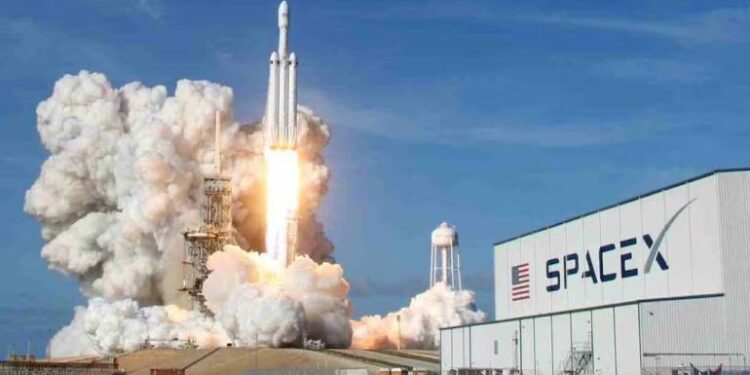SpaceX’s Starship rocket broke up over the Indian Ocean during its latest test flight, in a dramatic conclusion to what was nonetheless hailed as the programme’s most successful mission to date. The giant spacecraft, central to Elon Musk’s vision of interplanetary travel — reached space and completed several complex manoeuvres before it lost control on re-entry and disintegrated.
The launch, conducted from SpaceX’s Starbase facility in Boca Chica, Texas, marked the fourth full-scale test of the combined Starship and Super Heavy booster system. The vehicle soared higher and farther than in any previous attempt, successfully separating from its booster, executing an orbital coast phase, and conducting a controlled deorbit burn — all significant technical achievements for the programme.
However, trouble emerged as the spacecraft re-entered the Earth’s atmosphere. Live telemetry indicated that Starship developed multiple leaks, causing it to spin out of control. SpaceX later confirmed that the craft lost attitude control, and video feeds showed the vehicle breaking apart before impact over the Indian Ocean.
“Today’s flight achieved a number of firsts,” SpaceX said in a statement. “While the ship did not survive re-entry, the data collected will help us advance Starship development at a faster pace than ever.”
The Starship system is designed to be fully reusable and capable of carrying over 100 tonnes of cargo into orbit. It is also central to NASA’s Artemis programme, with a modified version of the spacecraft expected to serve as the lunar lander for upcoming crewed Moon missions.
Despite the fiery end, the flight demonstrated significant engineering progress. The Super Heavy booster, after cleanly separating from the upper stage, performed a complex flip and burn before landing in the Gulf of Mexico — a precision manoeuvre SpaceX hopes to repeat regularly once Starship is operational.
This test comes at a time when the company is racing to prove the reliability of Starship, particularly with mounting pressure from NASA to deliver on its lunar commitments. Starship’s sheer size and thrust capacity make it the most powerful rocket ever flown — a necessary step if humans are to return to the Moon and eventually reach Mars.
Analysts note that partial failures are expected in such ambitious testing programmes. Starship’s development follows a similar path to the Falcon series, where repeated test flights — even those ending in explosions — led to rapid improvements in design and performance.
With a fifth flight already in preparation, SpaceX shows no signs of slowing down. While this latest test fell short of full mission success, it brings the company a step closer to the future it envisions: a new era of heavy-lift, reusable spaceflight that could transform how humanity explores the cosmos.
newshub finance



Recent Comments